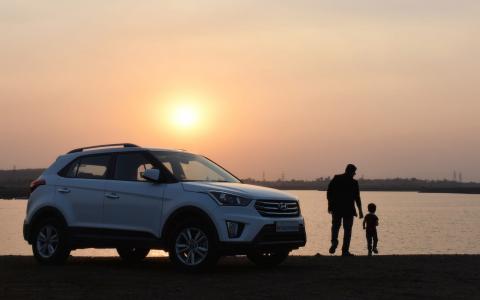
(Moneywatch) - Most small SUVs flunked the latest frontal crash tests done by the insurance industry but oddly enough, they're just as safe as they were before.
That's because the Insurance Institute for Highway Safety updated the test so it places more emphasis on keeping back-seat passengers safe.
Only the Ford Escape and Volvo XC40 got the top "good" rating in this year's testing released Tuesday. The Toyota RAV4 was rated "acceptable," while Audi's Q3, the Nissan Rogue and the Subaru Forester were "marginal."
The remainder, the Buick Encore, Chevrolet Equinox, Honda CR-V and HR-V, Hyundai Tucson, Jeep Compass, Jeep Renegade, Mazda CX-5 and Mitsubishi Eclipse Cross got the bottom rating of "poor."
IIHS President David Harkey said the test is being changed because vehicle structures, air bags and seat belts have made the SUVs safer for front-seat passengers than those in the back. Now, the risk of fatal injury is 46% higher for rear-seat passengers than drivers in the front, Harkey said.
"Before we were just focused on how well the driver was protected," Harkey said. "It's not that the vehicle has become any less safe."
The institute has a history of changing its widely watched tests in an effort to get automakers to make safety improvements, and Harkey says they normally respond to the changes.
While safety belts restrain back-seat passengers, they're susceptible to head and neck injuries, and in many of the SUVs, the belts are relatively low tech and simply tighten up in a crash.
Newer belts have sensors that determine a crash is imminent and they pull a passenger into the proper seating position before a crash, slowing the passenger's speed with the vehicle, Harkey said. After impact, they loosen a bit to prevent belts from rising off the pelvis and into the abdomen where they can cause severe internal injuries, he said.
"Before we were just focused on how well the driver was protected," Harkey said. "It's not that the vehicle has become any less safe."
The institute has a history of changing its widely watched tests in an effort to get automakers to make safety improvements, and Harkey says they normally respond to the changes.
While safety belts restrain back-seat passengers, they're susceptible to head and neck injuries, and in many of the SUVs, the belts are relatively low tech and simply tighten up in a crash.
Newer belts have sensors that determine a crash is imminent and they pull a passenger into the proper seating position before a crash, slowing the passenger's speed with the vehicle, Harkey said. After impact, they loosen a bit to prevent belts from rising off the pelvis and into the abdomen where they can cause severe internal injuries, he said.
December 13, 2022



